
Ropa Blanca / White Clothing 2018
I will follow mysterious cotton blankets found in caves wrapping mummies. Theses mummies belonged to the Guane people, an indigenous group from Colombia. I grew up surrounded by the mountains where these caves-cemeteries were found. As a child, I heard about these archeological finds but I never really saw any of them. Later on, when I became an adult and an artist I decided to research about these renowned blankets and is where the story started.
Ropa Blanca (White Clothing) is an art project inspired by a cotton textile created by a group of rural women in Colombia. These women have revived partial knowledge of the ancestral techniques of growing, spinning, and weaving of the Guane People, an indigenous group that no longer exists. The project aims to explore the various moments and stories associated with this type of hand-crafted canvas.
The Unproductive People / Improductividad
Embroidery on hand-craft cotton textile, 32″ x 51″, 2018 / Bordado sobre lienzo de algodón artesanal, 83 cm x 130 cm, 2108
*It is a quote from Memorias de Hacienda, 1847, Florentino Gonzalez, State Secretary for the Treasury Desk of the Nueva Granada Government (today it is Colombia) This quote was found in the article “Santander, el algodón y los tejidos del siglo XIX” by Pierre Raymond, Ph.D., and published in Revista Credencial, 2015.


Wrapped & Covered / Envuelto, revestido y recubierto
Inkjet print on semi – gloss paper, (2) x 41” x 61”, 2018 / Impresión inkjet sobre papel semi-brillante, (2) x 105 cm x 155 cm, 2018
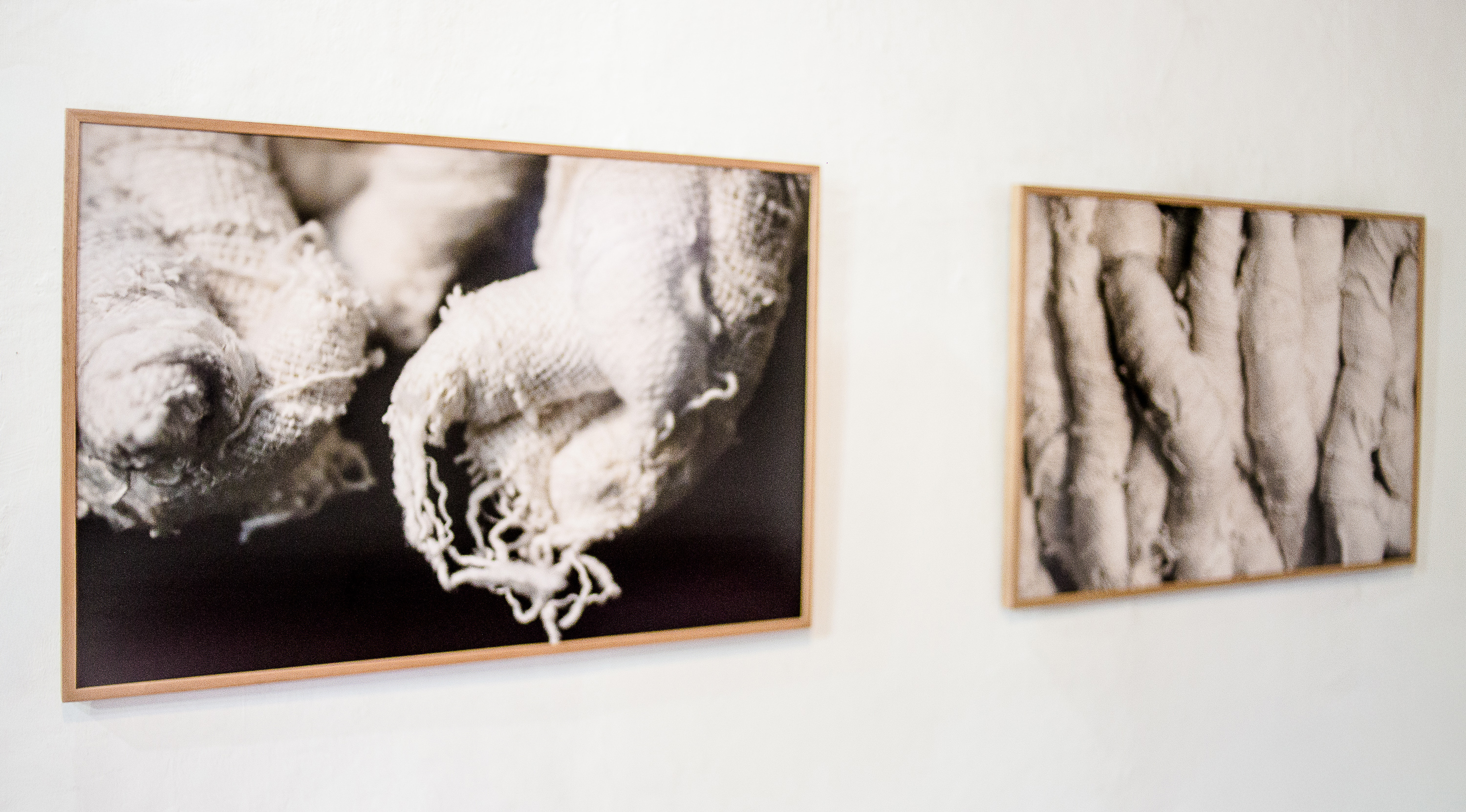


White Clothing / Ropa blanca
Installation, hand-crafted cotton textile, stop-motion animation, sublimation on textile, dimensions variable, 2018 / Instalación, textile artesanal de algodón, animación stop-motion, sublimación sobre textil, dimensiones variables, 2018




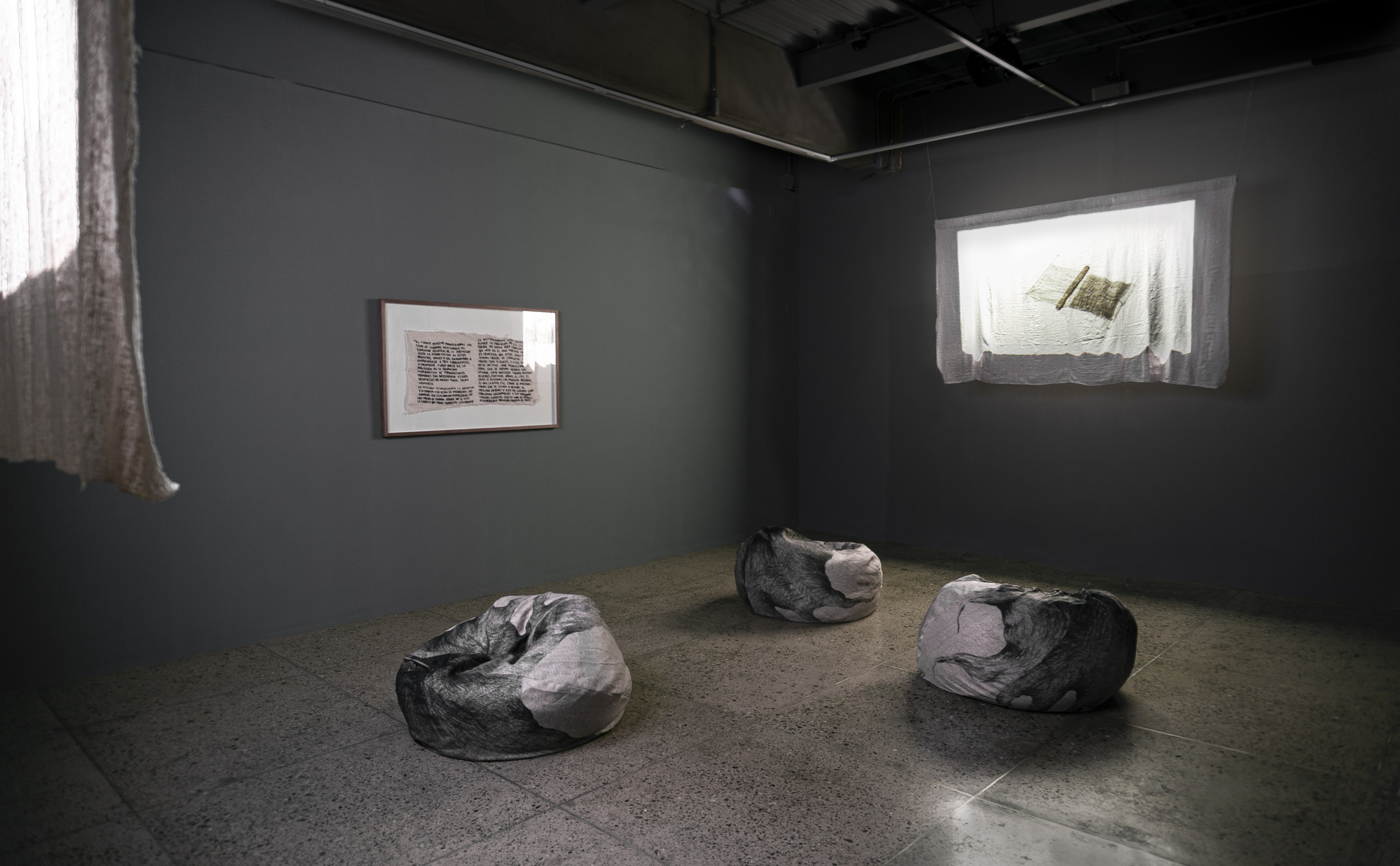
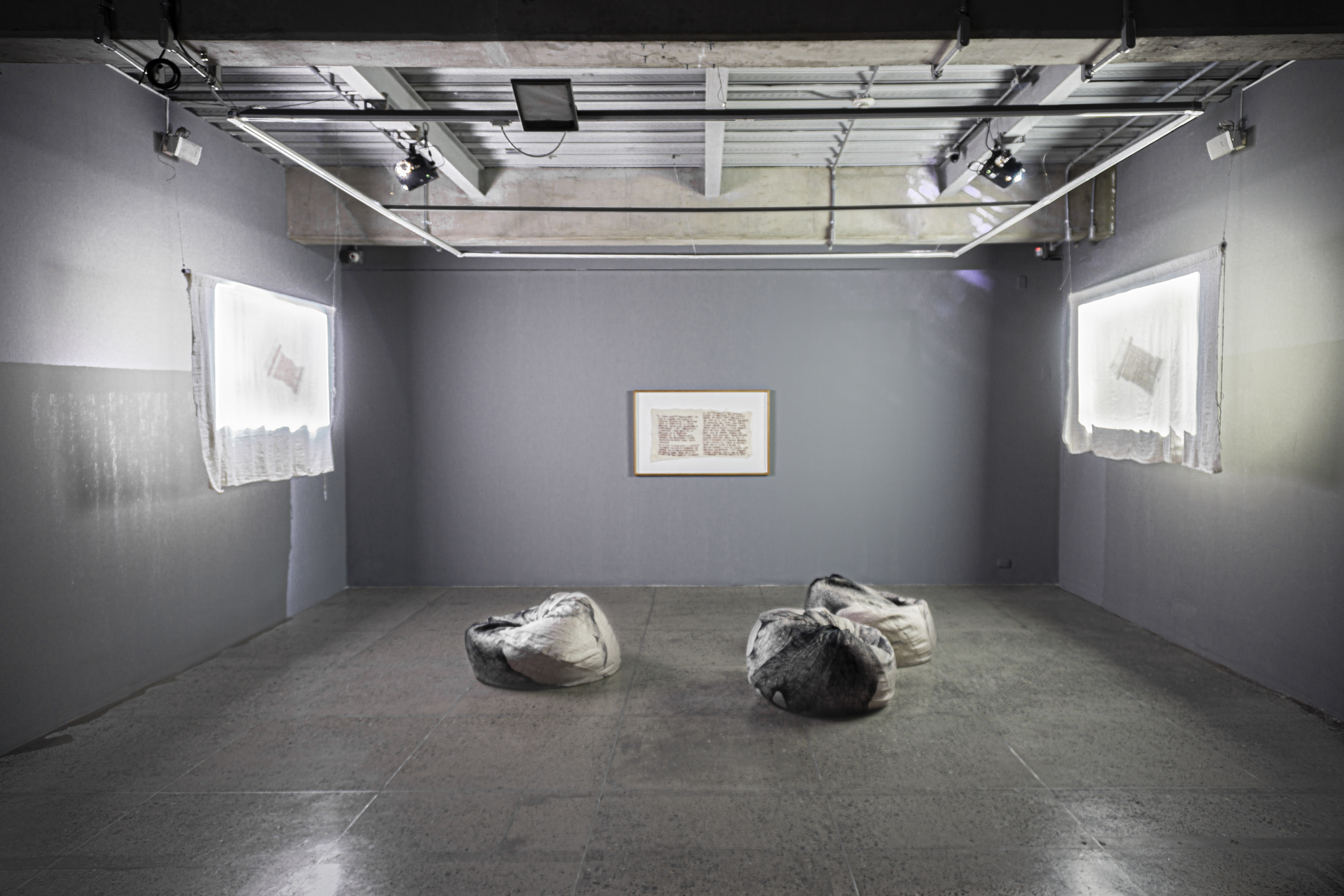
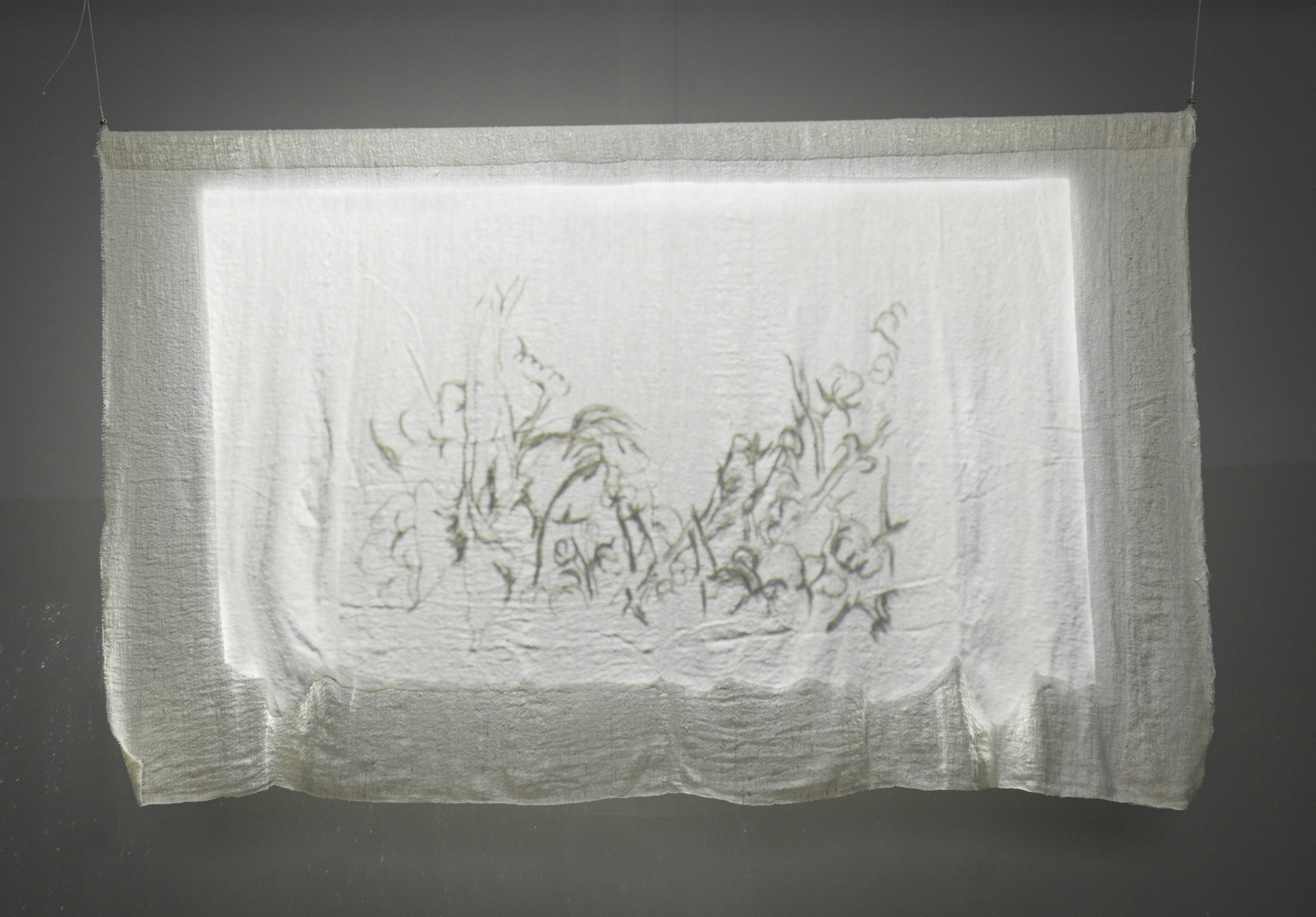

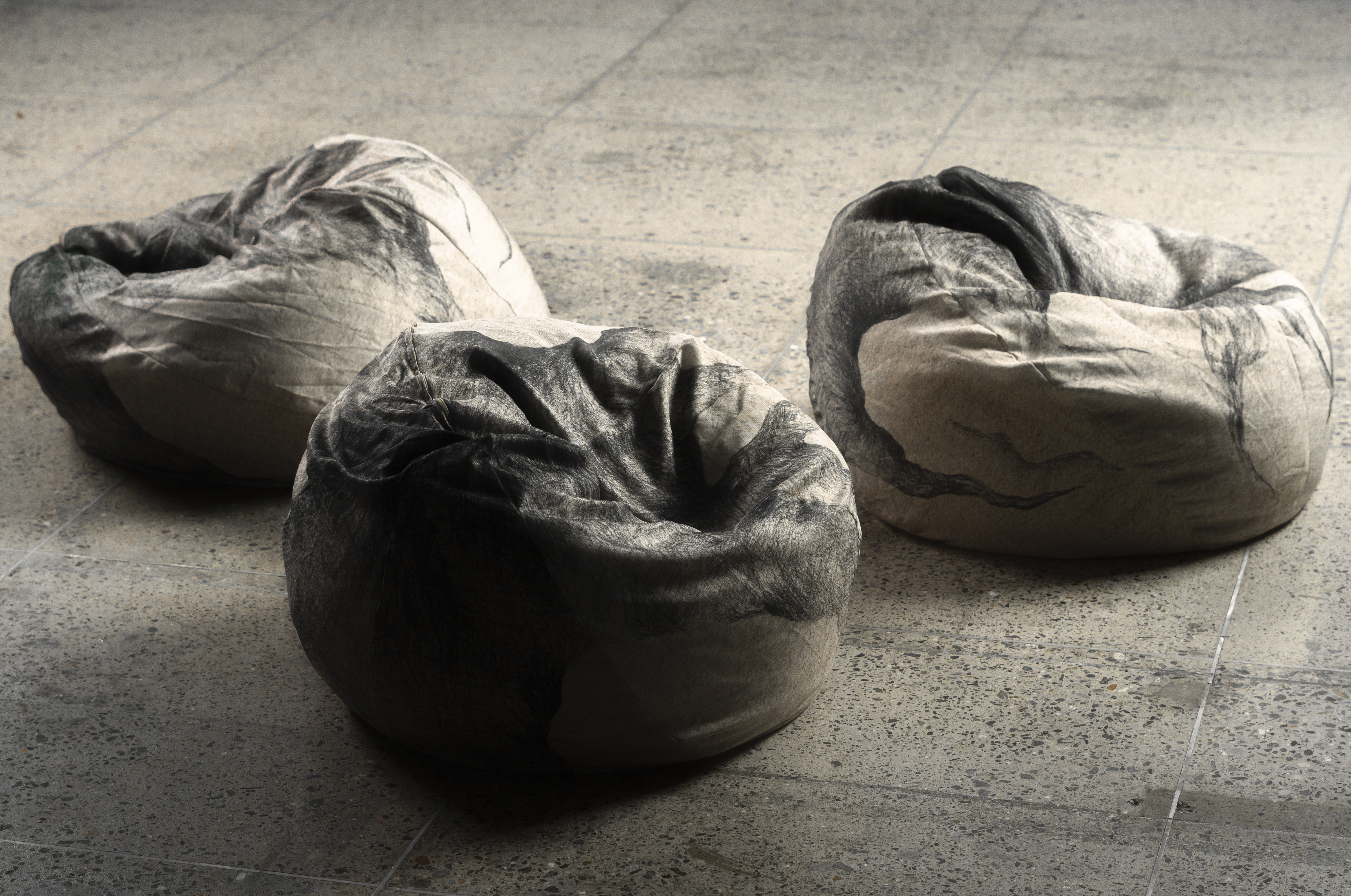
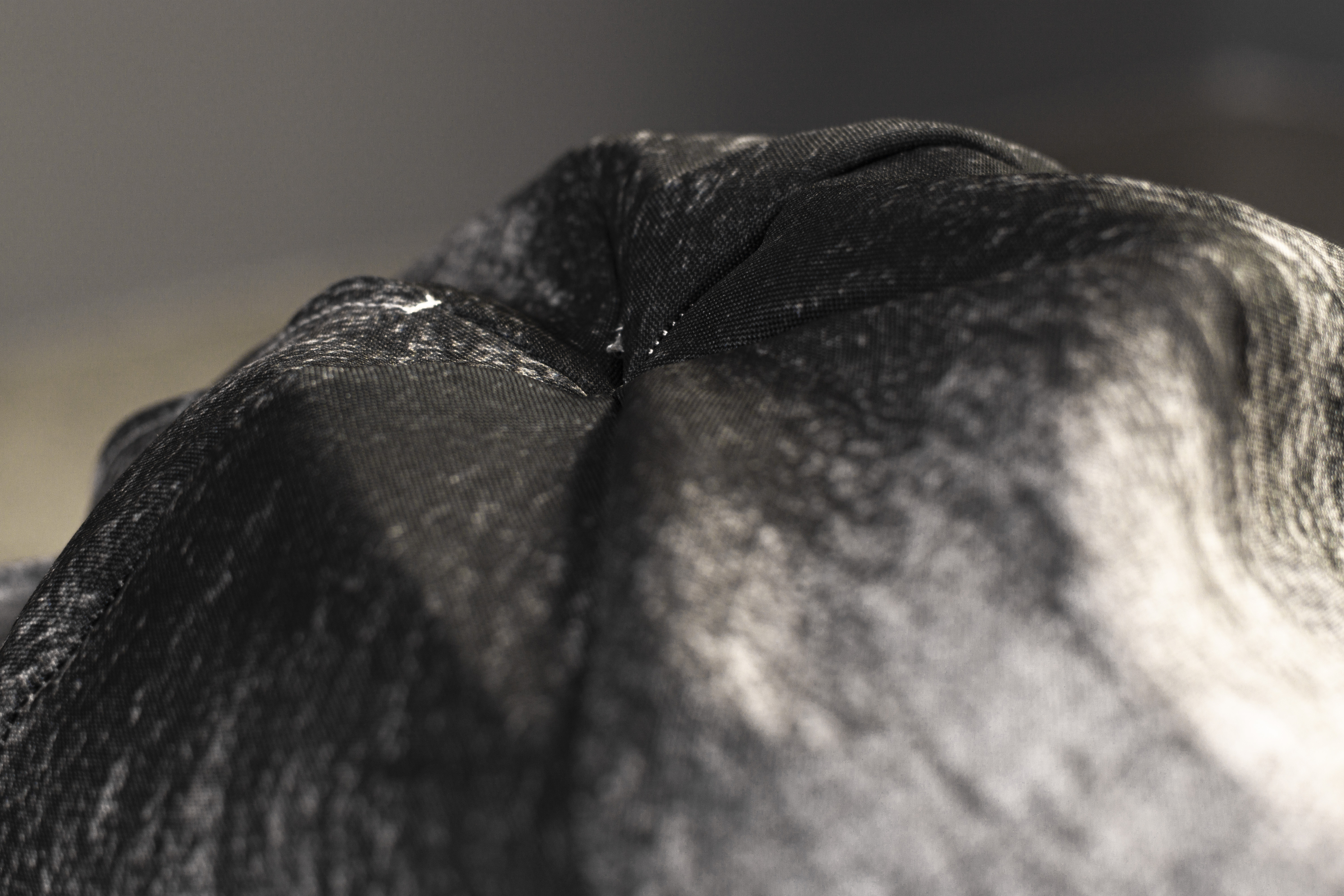
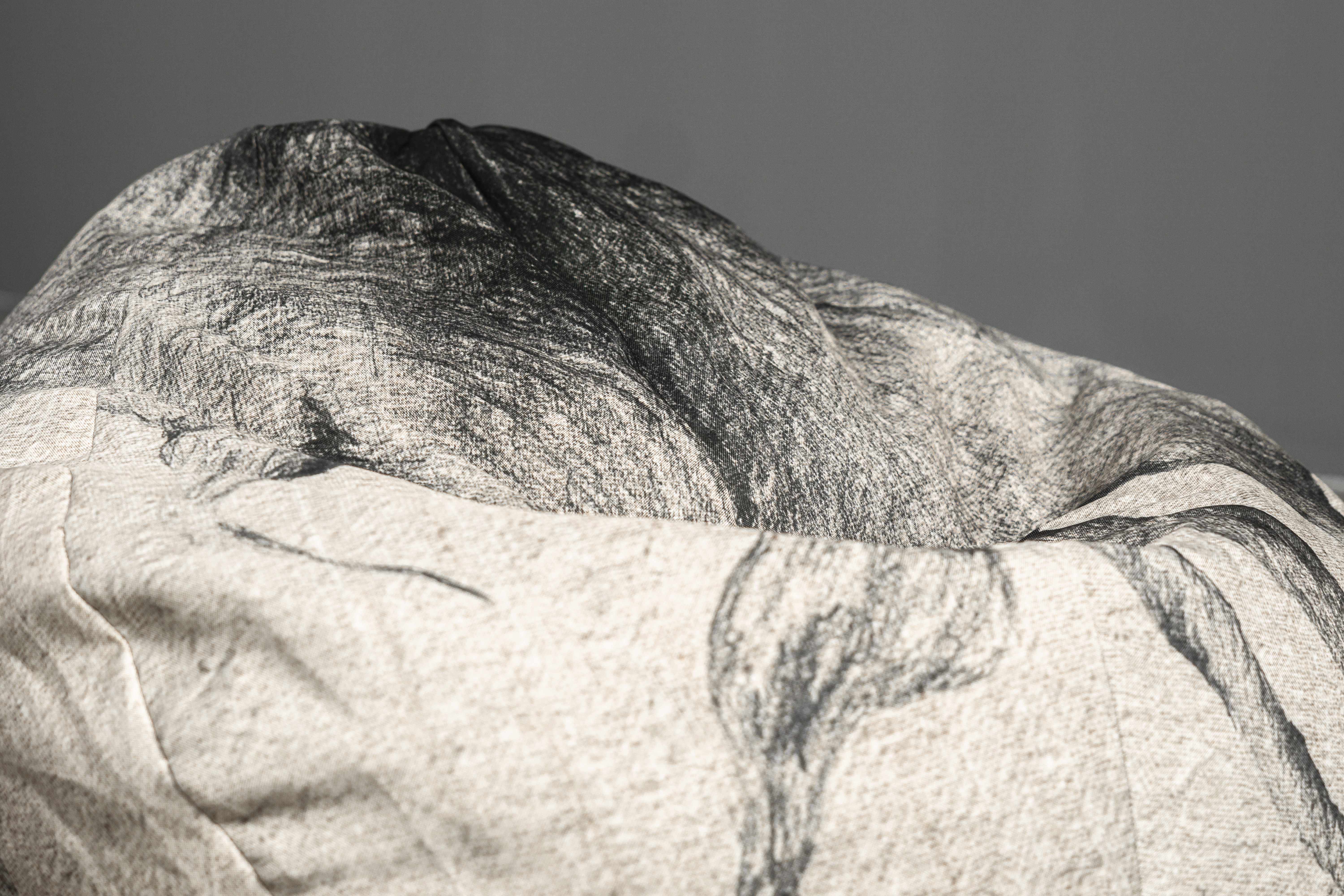
musical composition: Carolina Silva
Preparatory drawings for the animations
Drawing on paper, (3) 8″x 10″ and (3) 3,5″ x 6″, 2018







Doña Amelia Tells… / Doña Amelia Cuenta
Embroidery on hand-craft cotton textile, 24″ x 76″, 2018 / Bordado sobre lienzo de algodón artesanal, 63 cm x 193 cm, 2020
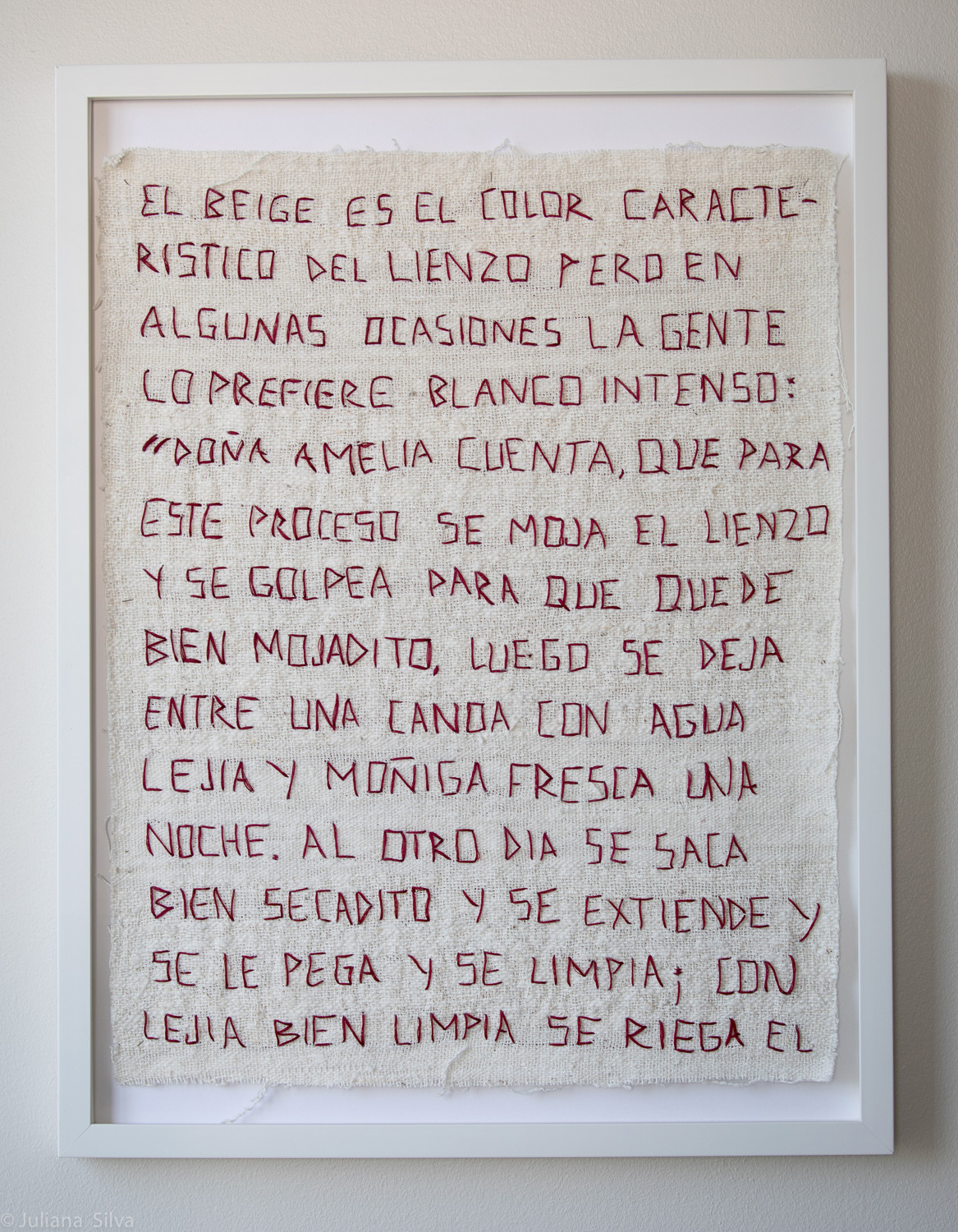
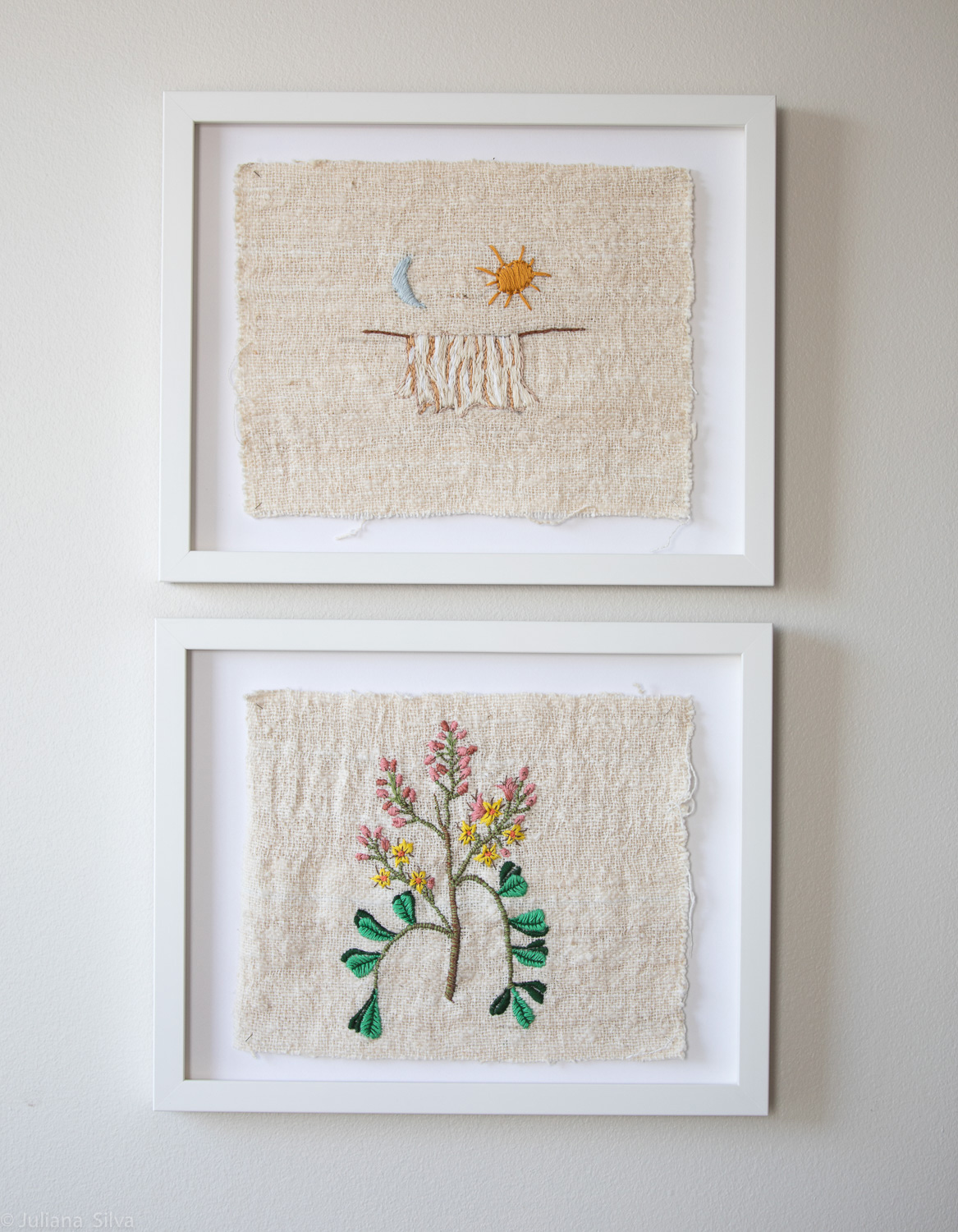

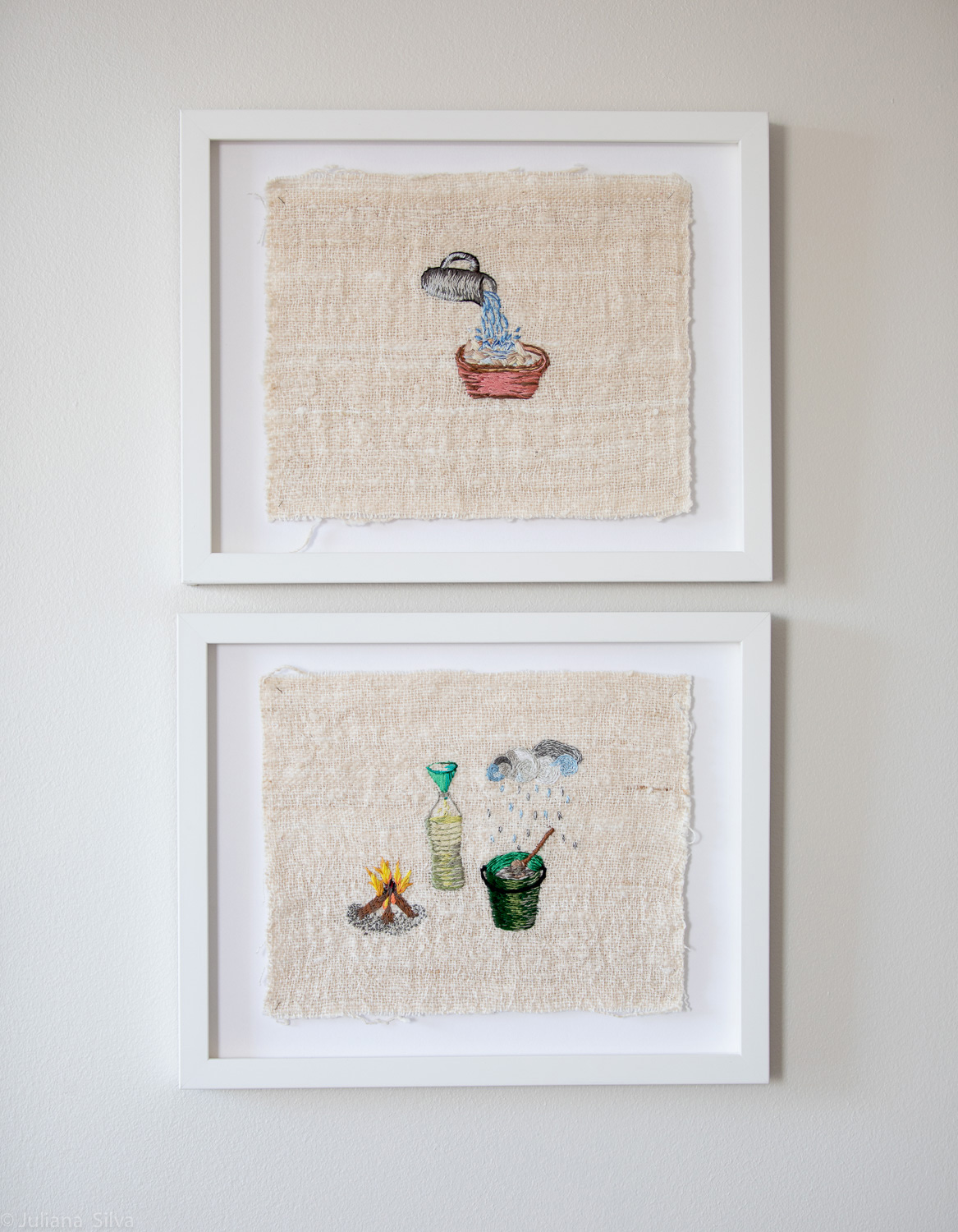
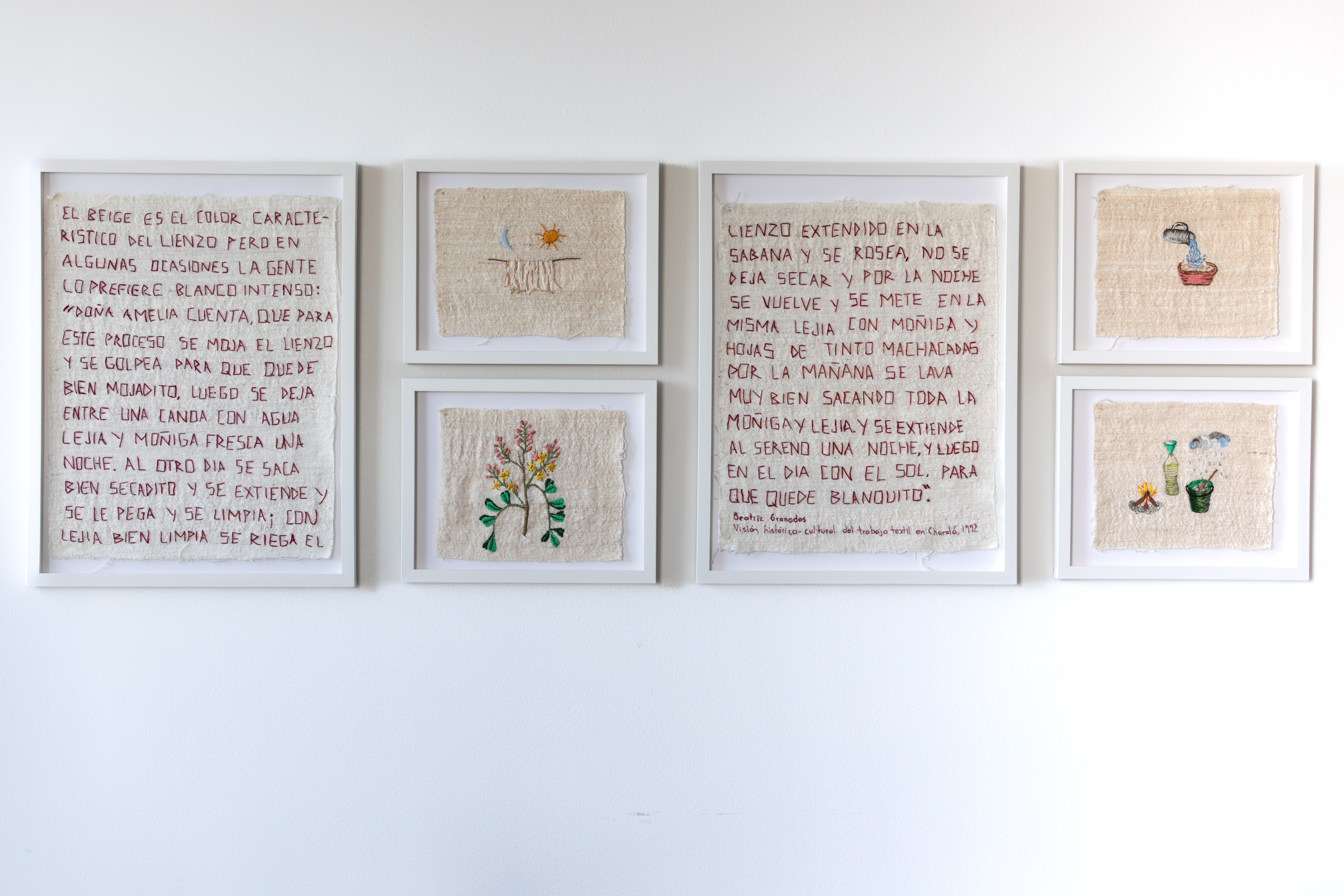
Second Skin Performance / Performance Segunda piel
The garments tracing the surface of the body are often considered to be second skins, and the patterns covering them always say something about the wearer.
Bradley Quinn
Dancer: Camila Silva, sound composition: Carolina Silva






ROPA BLANCA
Textiles are powerful objects that can reveal much about politics, power dynamics, the economy, culture, and society. By exploring the small stories of textiles intertwined in our daily lives, I seek to create pieces that tell a story and provoke thought. For instance, in my project, Ropa Blanca (White Clothing), I utilized textiles as my primary art material, leading me to explore sculpture, installation, drawing, and photography.
For this project, I used a hand-crafted cotton canvas made by a group of rural women near the city where I grew up in Colombia. These women worked to recover the ancestral knowledge of weaving, cultivating, and spinning cotton. Initially, the indigenous Guane people in the northeast region of the Colombian Andes created a similar textile for their blankets. The Guane blankets, which were exquisitely woven and decorated for funeral rituals, were considered unproductive by the colonial powers, who imposed a European system of slavery and exploitation that denigrated indigenous practices. The white cotton canvas, which the indigenous and dispossessed peasants used, became a social code that identified people experiencing poverty.
Over time, knowledge of the fabric faded, with only a few remnants of the technique still carried on by some rural women of the region. These women used the fabric to strain the pulp to make guava jelly candy, which is how this knowledge did not disappear completely.
I am particularly interested in the material’s potency and connotations; in each piece, I explore the cotton canvas in its different stages, from cotton crop to finished textiles. I also explore its multiple functions, such as ritual objects, garments, and blankets, and their tactile and visual qualities.
Acknowledgments:
I would like to thank and acknowledge the weavers and members from CORPOLIENZO in Charalá, Colombia, who opened their weaving studio in 2007 and shared their knowledge with me. This project came to life 11 years later. First, in 2007, it was an attempt at a documentary, and then, in 2018, it became a visual arts project. I was able to buy their textiles and incorporate them into the Ropa Blanca Project.
Reconocimientos:
Quiero agradecer y reconocer a las tejedoras y miembros de CORPOLIENZO en Charalá, Colombia, quienes en el 2007 abrieron su taller de tejido y compartieron su conocimiento conmigo. Este proyecto finalmente se consolida 11 años después. Primero en el 2007 intentó ser un documental y después en el 2018 se materializó en un proyecto de artes plásticas. Fue posible comprar sus textiles e incorporarlos en el proyecto Ropa Blanca.
Comments are closed, but trackbacks and pingbacks are open.